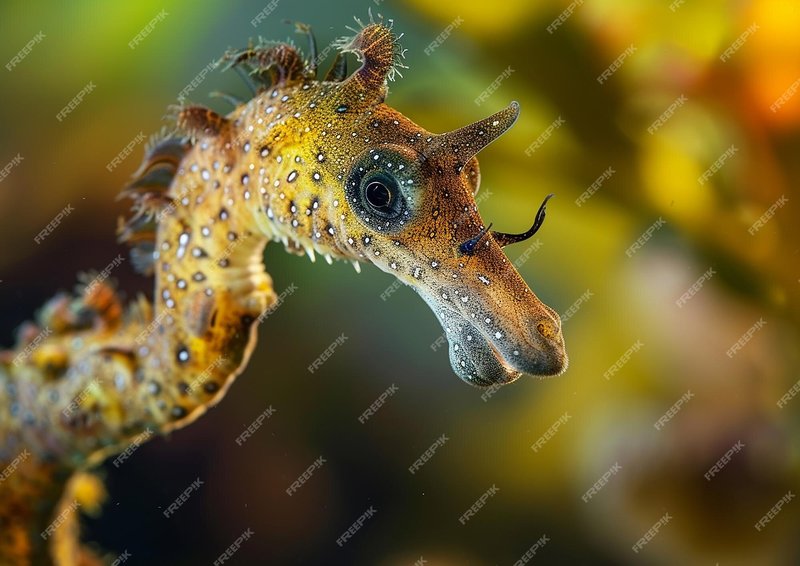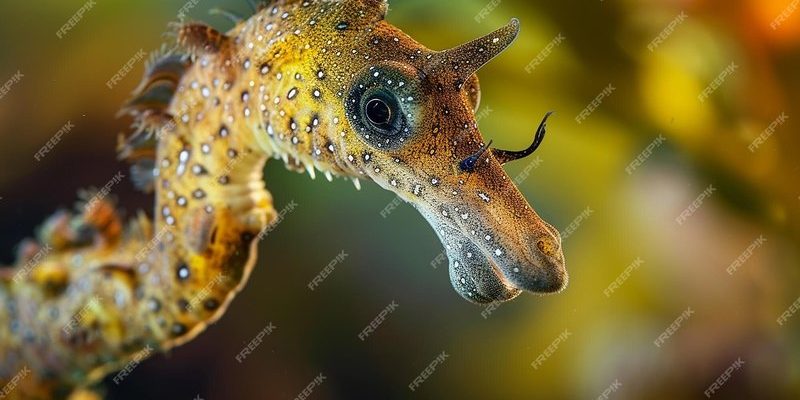
Seahorses are captivating not just for their looks but also for their quirky habits and social dynamics. Just like people, they have their own personalities and styles of interacting with one another. If you ever find yourself fascinated by these enchanting fish, you’re in for a treat. Let’s dive deeper into their behavior and temperament, exploring what makes these little swimmers so special.
Understanding Seahorse Behavior
When it comes to behavior, seahorses exhibit a variety of fascinating traits. These creatures aren’t the fastest swimmers; instead, they rely on their unique ability to stay still, camouflaging themselves among seaweed and coral. This stealthy behavior helps them avoid predators and catch food. You might think of them like little ninjas of the ocean floor, using their environment to their advantage.
Seahorses are also known for their mating rituals, which can be quite elaborate. They often engage in a courtship dance that takes place over several days. During this time, a male seahorse will wrap his tail around the female’s body, and they will swim together in a synchronized manner. It’s like watching a beautiful ballet unfold in the water. This bond is so strong that they can even change colors to reflect their mood, enhancing their emotional connection.
One unique aspect of their behavior is their parental role reversal. Male seahorses carry the fertilized eggs in a special pouch until they hatch, which is quite unlike most species in the animal kingdom. This nurturing role often leads to a deeper bond between mates, showcasing a level of cooperation that many other marine animals don’t share.
The Social Life of Seahorses
You might be wondering if seahorses are social creatures. The answer is a bit nuanced. Generally, seahorses are somewhat solitary, preferring to stake out their own little territory. Think of them as the introverts of the ocean. They like their space, but when in pairs or larger groups, they can form loose social structures.
In these gatherings, you might see them engaging in interesting interactions. They communicate primarily through body language, using their posture and movements to indicate feelings or intentions. For example, if a seahorse feels threatened, it might swim away or change its color to blend into its environment.
However, when it comes to mating, these social connections become crucial. A pair of seahorses often will stick together for an entire breeding season, demonstrating loyalty rarely seen in the animal kingdom. This connection is usually based on mutual trust and frequent interaction, creating a strong partnership.
The Temperament of Seahorses
Seahorses have a temperament that can be described as gentle and shy. They’re not aggressive and prefer to avoid conflict whenever possible. Instead of swimming aggressively or chasing after prey, they patiently wait for small crustaceans to come close enough to catch. This laid-back style of hunting mirrors their overall personality—calm and collected.
When placed in a new environment, seahorses may exhibit stress-related behaviors. For example, they might hide away, trying to blend in with their surroundings. Here’s the thing: just like how we might feel anxious in a new setting, seahorses also need time to adjust. That’s why providing a spacious and familiar habitat is key to keeping them healthy and happy in aquariums.
Interestingly, the color of a seahorse can reflect its mood. Some might turn darker when stressed or agitated, while others may brighten up when they feel safe or content. This ability to change colors is not just a defensive mechanism but a way of expressing emotions. It’s a reminder that these creatures, while small, possess a complex emotional life.
Seahorse Interaction with Environment
Seahorses are true masters of camouflage, often mimicking their environment to avoid predators. Their bodies can blend in with coral, seagrass, and other underwater vegetation. This allows them to stay hidden while they wait for meals, acting like they’re part of the scenery. It’s almost like wearing a disguise that changes every day!
Depending on where they live, seahorses develop specific adaptations. For instance, seahorses living among seagrass might have longer fins, allowing them to blend in better with the tall blades. You might think of this as nature’s way of tailoring each seahorse to its habitat—nothing short of brilliant!
Another crucial aspect of their environment is the availability of mates and food. Seahorses prefer areas with plenty of cover and ample food supply, as these conditions help them thrive. When the ecosystem is healthy and balanced, seahorses are more likely to feel secure and display their charming behaviors without stress.
Common Challenges in Seahorse Behavior
Just like any other creature, seahorses face challenges in their behavior and temperament. One significant issue is habitat loss due to human activities. As coastal areas are developed, seahorses lose their homes, leading to stress and declining populations. Without suitable environments, these gentle creatures struggle to survive.
Another challenge is their vulnerability to predators. Young seahorses are especially at risk, requiring protection as they grow. That’s why having a safe habitat isn’t just important for feeding; it’s crucial for their overall survival. When their environment is disturbed, it puts immense pressure on their already delicate lives.
In aquariums, keeping seahorses can also prove challenging. Their specific needs, such as water quality and temperature, must be maintained perfectly. If these conditions aren’t met, it can lead to stress and even affect their health. This means that those who keep them as pets need to be very dedicated to ensuring their well-being.
Seahorses are fascinating companions of the ocean, embodying a mix of grace, beauty, and vulnerability. Their behaviors and temperaments give us a glimpse into their complex lives, reminding us that even the smallest creatures have rich stories to tell. Whether it’s their unique mating rituals or their shy nature, seahorses offer endless wonder and curiosity.
As we continue to learn more about these enchanting creatures, it’s important to appreciate and protect their habitats. After all, we don’t want to lose such incredible beings from our oceans. So, the next time you think of seahorses, remember their delicate dance in the water, their quiet personalities, and the powerful role they play in marine ecosystems. They’re not just little fish; they’re part of a larger story, one that deserves our attention and care.

